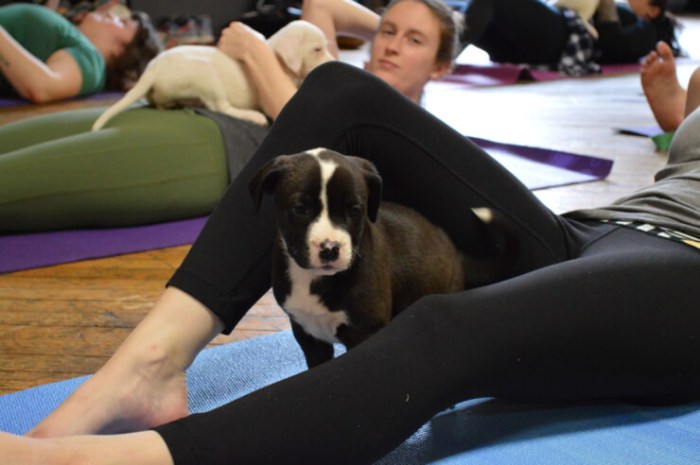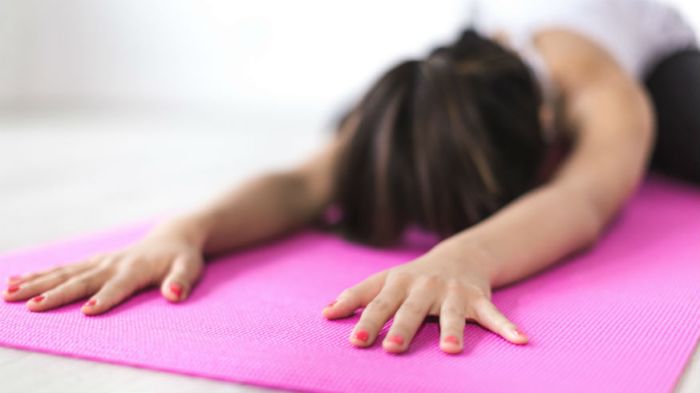Many adults suffer from lower back pain, whether it’s caused by strained muscles, herniated discs, or a nerve condition such as sciatica. While many can benefit from regular physical therapy (PT), new research suggests that yoga is just as effective of a treatment option.
The study, published Monday in the Annals of Internal Medicine, was conducted by researchers at Boston Medical Center. They divided 320 adults with chronic lower back pain into three groups. Over a three month period, one group attended weekly yoga classes, the second attended 15 physical therapy sessions, while the third was giving educational materials, including self-help books and newsletters. For an additional nine months, participants from the yoga and physical therapy groups continued their respective treatments, practing yoga at-home or attending drop-in yoga classes and less frequent “bolster” PT sessions.
Researchers assessed results at both the three-month and one-year mark, based on responses to a questionnaire and phone check-ins. They found that the physical therapy and yoga groups reported an equal amount of improvement in terms of pain relief and activity limitation at both three months and at the one-year mark.
Another key finding: At the end of the three month period, the percentage of patients in both the yoga and physical therapy groups that reportedly took pain medication dropped to 50 percent. There was no change in the education group.
The findings are especially significant to those without health insurance, who might not be able to afford out-of-pocket costs of physical therapy. While a typical yoga class is pretty pricey, many studios offer community or donation-based yoga classes, as well as work-study programs which allow clients to take classes for free in exchange for a certain number of weekly hours working at the studio. (Not to mention, you can find yoga classes online, for free on Youtube or affordably at sites such as yogaglo.com, which offers unlimited classes for $18/month). And if you can afford yoga and physical therapy, why not do both.
Study author Rob Saper, director of integrative medicine at Boston Medical Center, told NPR that he wouldn’t advise those with chronic back pain to take just any yoga class. He and his team of researchers, along with input from yoga practicioners, doctors and physical therapists, developed a specific program that incorporates gentle poses, breathing and meditation.
So maybe stay away from power yoga classes. In general, folks should first consult with their primary care doctor to discuss treatment options.

























